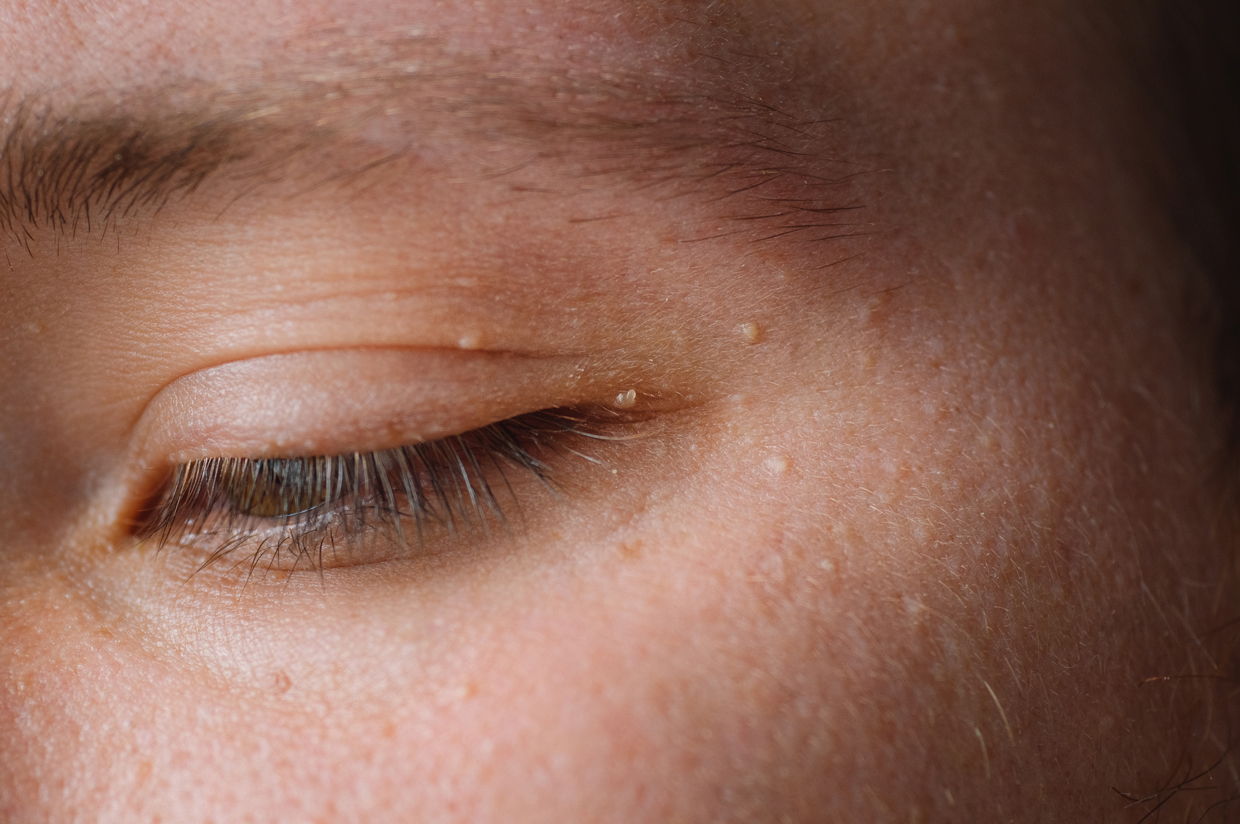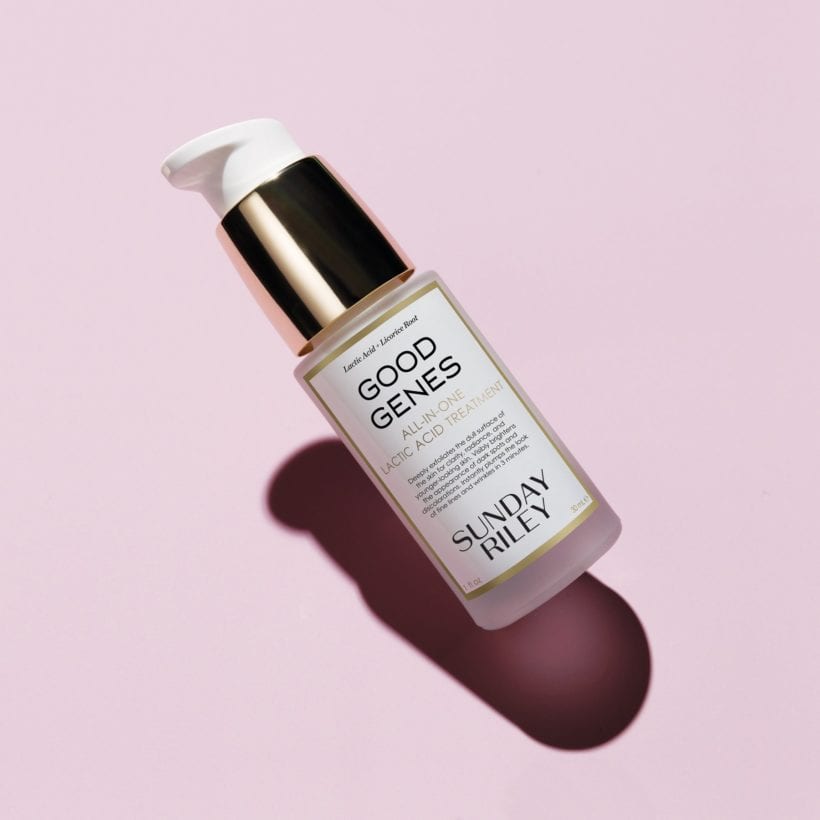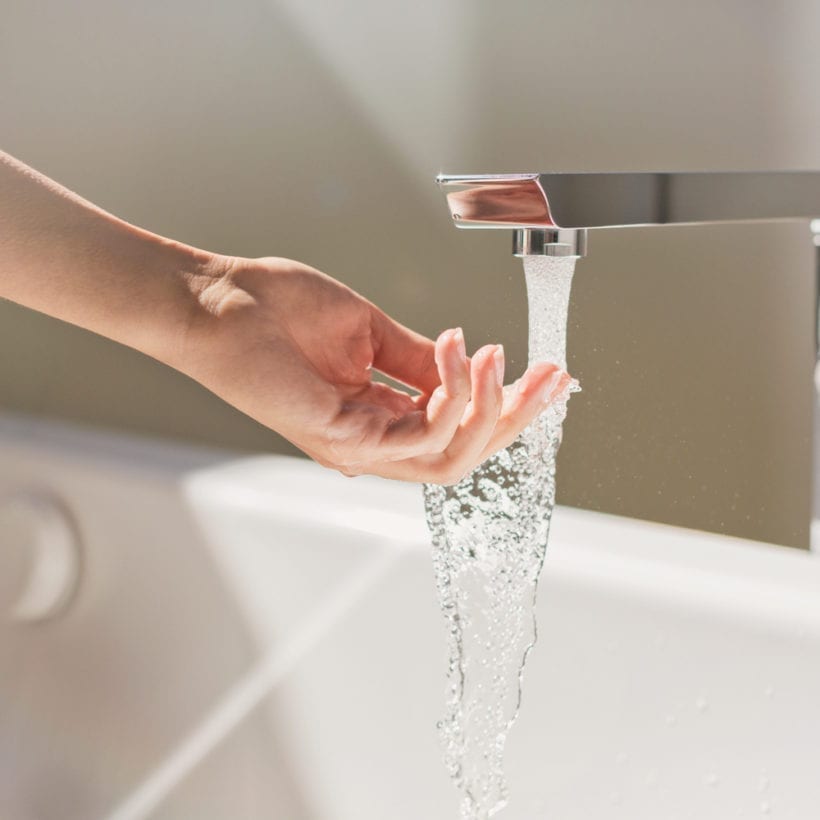I have a confession: For the past few weeks I’ve been picking at a whitehead — even trying to force it to come to a head with steamy showers and hot compresses — only to learn that my stubborn spot wasn’t a pimple at all.
It turns out, it’s a milium (the singular form of milia). Sometimes called a milk spot, it gets its name for its milky white appearance. “Patients normally confuse milia for pimples or even warts, but to a trained eye they are pretty distinct,” says Dr. Naana Boakye, a board-certified dermatologist, owner of Bergen Dermatology, and best-selling author of Inside Out Beauty: Your Prescription for Healthy, Radiant, and Acne Controlled Skin. If you suspect that your white spot is milium and want to understand more about this common skin condition, our expert lays out all the 4-1-1 below.

What’s a milium?
It’s a harmless white of off-white cyst that typically appears on your face — the nose, eyelids, and your cheeks are common places where milia like to camp out. It’s not filled with pus like a pimple. Instead, “it’s filled with keratin-like material,” says Boakye. “They are totally asymptomatic, so they shouldn’t be itchy or uncomfortable. It’s more of a cosmetic nuisance.”
What causes the different types of milia?
In a nutshell, most of these cysts form when dead, old skin cells harden and get trapped in the layers of your skin. There are a few different subtypes of milia that can give you a more specific idea of how milia start. The most common are:
- Neonatal milia: Sometimes mistaken for baby acne, neonatal milia can be present at (or shortly after) birth from blocked sweat glands.
- Primary milia: They can occur in both children and adults and are similar to neonatal milia. Primary milia are also linked to genetic skin disorders.
- Secondary milia: They occur when the skin is damaged whether through sunburn, a rash, or an injury. Secondary milia can also happen as a reaction to an occlusive cream or using topical steroids for an extended period of time.

Who typically gets milia?
Though you often hear about babies getting milia (studies show it can affect up to 50% of infants at birth), it can affect anyone at any age. Adults who don’t have a skincare routine that includes exfoliation or using pore-clogging ingredients (like oil-based makeup) may be more prone to developing milia.
What are treatment options?
Most milia should go away naturally in time. When it comes to babies, you never want to exfoliate their delicate skin or use harsh soaps — just continue to bathe them regularly with warm water and mild baby soap.
For adults, if they don’t go away on their own within a few weeks or months, your dermatologist might suggest starting off with a new skincare routine: “You could also use over-the-counter adapalene that has retinoid,” says Boayke. But, if you’re not seeing results at home, a quick in-office procedure like cryotherapy, cauterization (burning them off), laser surgery, dermabrasion, a prescription exfoliant, or a chemical peel could do the trick. In the meantime to avoid milia from recurring, wash your face and slough off dead skin cells with a gentle exfoliant like Sunday Riley Good Genes Lactic Acid Treatment. No matter the age, make sure not to pick or poke at your milia as it can cause a break in the skin that might lead to a scar or infection. “You also want to avoid occlusive products that could clog your pores and make you more prone to developing milia,” says Boakye.
We only recommend products we have independently researched, tested, and loved. If you purchase a product found through our links, Sunday Edit may earn an affiliate commission.








